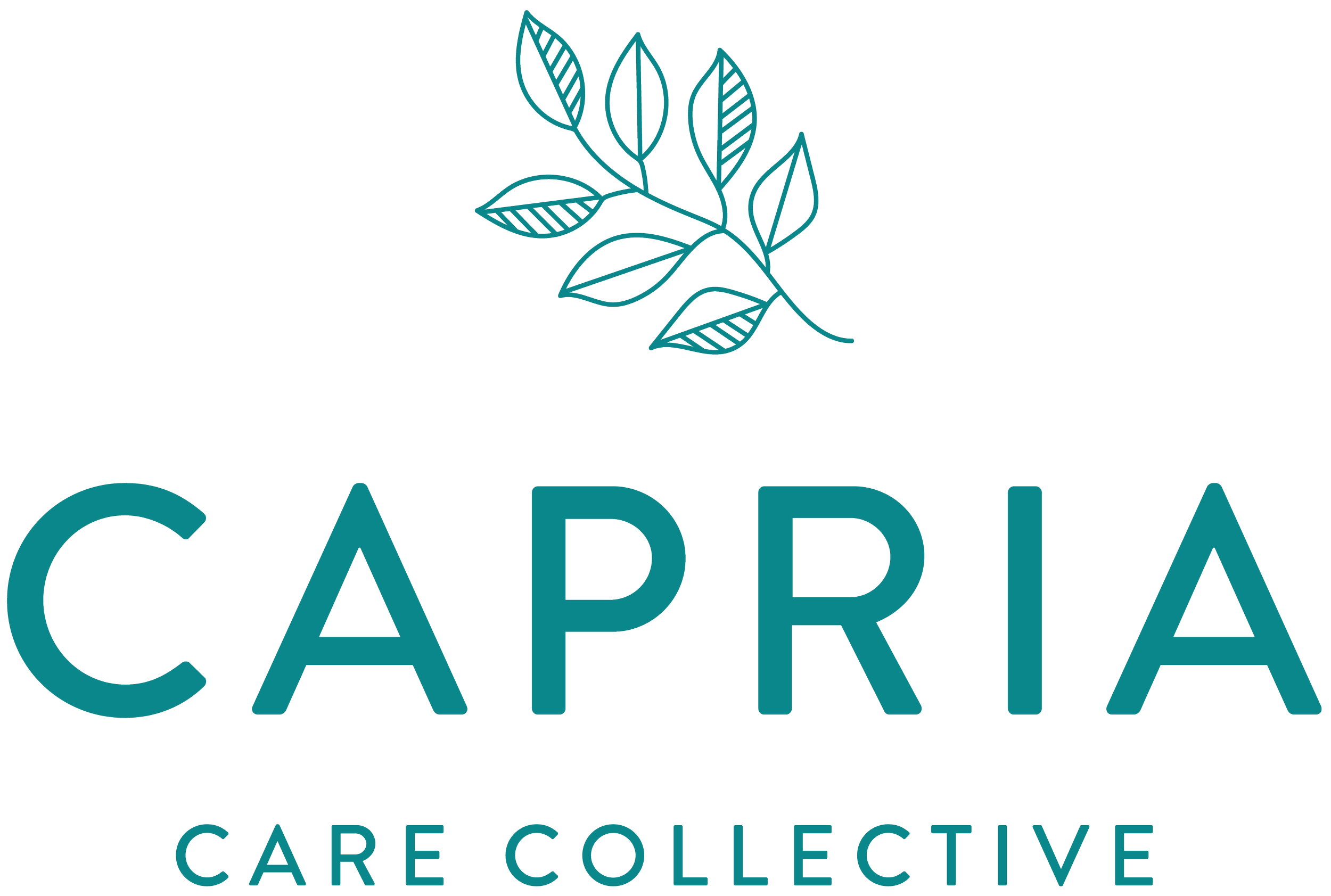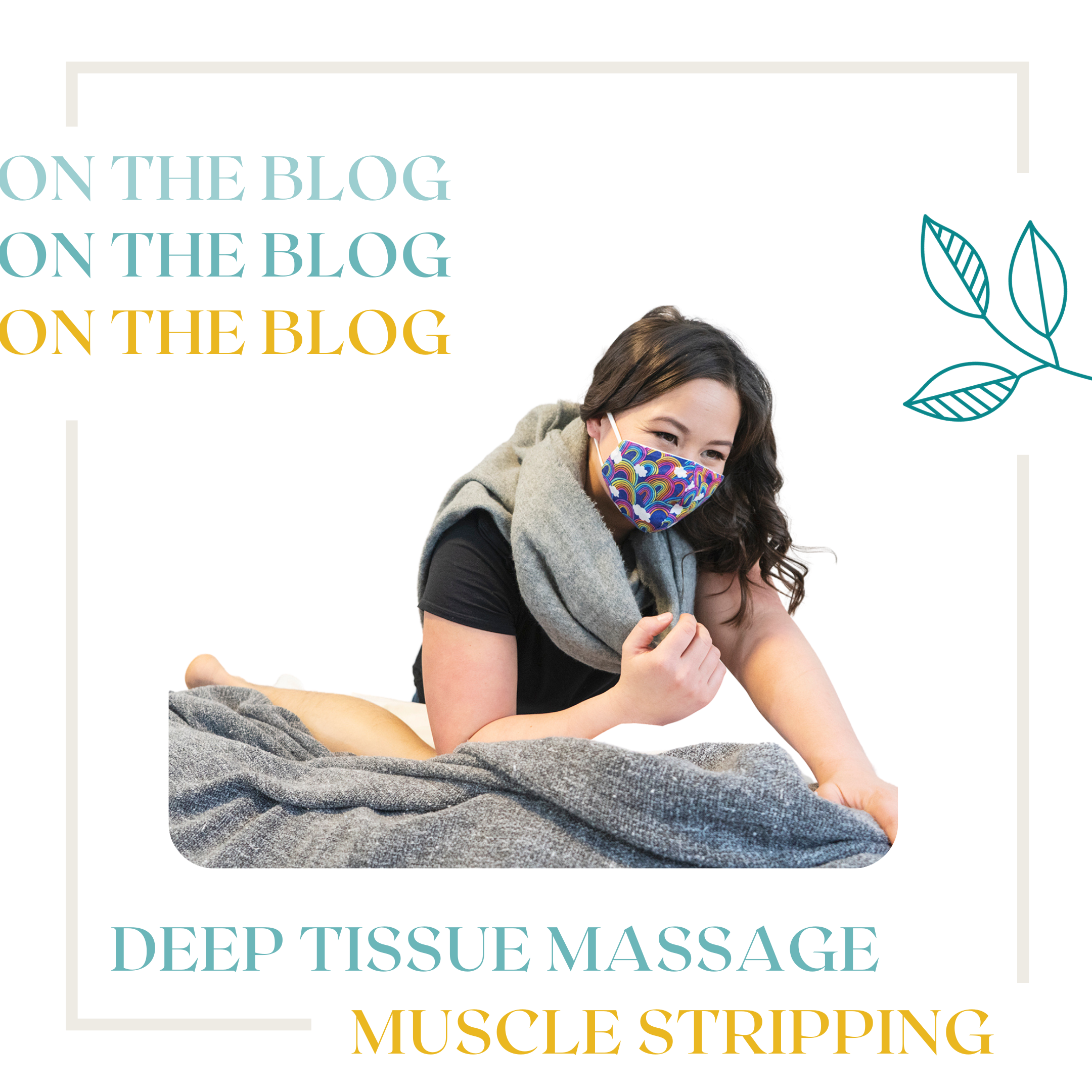How to Massage: Deep tissue massage
Have you ever offered to give someone a massage and found the deep tissue massage that your own body was craving was is “too deep” or “too hard” for the person you’ve offered your massage to?
Today we’re going to talk about muscle stripping. A “deep tissue massage” technique that I use every day and for every treatment in my practice. We’re going to talk about the definition of “deep tissue massage”- or my interpretation of it; then we’ll touch on muscle stripping and how it fits into the “deep tissue massage” category and lastly and importantly, how to muscle strip
Read til the end to learn how to give an effective massage that is not only deep tissue but also deeply relaxing.
So, what is deep tissue massage anyway? While deep tissue massage is not exactly a technique that’s taught in massage school, I like to think that “deep tissue massage” is any technique that that’s used in the middle of the treatment that’s specific enough to affect the exact muscles or structures that’s causing the patient pain.
Additionally, there’s a group of techniques bundled under the umbrella term “petrissage” and some of those techniques are what I would consider “deep tissue”.
Petrissage includes several other techniques
Muscle lifting
Skin rolling
Palmar and fingertip kneading/stroking/stripping – all interchangeable terms
Vibrations and
Tapotment
To be honest, I haven’t used most of those techniques since I first learned them massage school, but I do use palmar and fingertip kneading - or what I prefer to call muscle stripping all damn day. It’s EXTREMELY valuable to my career.
Muscle stripping can be done several different ways but the BEST way is the most pain free way for your own body. Find the position that works best for you and you’ll have a career for life. It’s always intimidating to try new skills when you’re in massage school but I promise you, the bar as a student is VERY low.
As a patient, it's a lot easier to walk away from a sh*tty $40 student massage than it is to walk away from a terrible RMT massage – the bar is a lot higher when you’re registered. Not to mention, your entire livelihood and reputation are on the line.
Let’s jump in and talk about muscle stripping and all the ways it can be done. We’ll talk about:
- Palmer stripping
- Finger stripping
- Thump stripping
- Knuckle stripping and finally,
- Olecranon stripping – that’s with your elbow.
To start the treatment, remember your principles of massage and your effleurage techniques. Once I’ve warmed up the tissue, I can get more specific into the muscle that I want to affect.
For palmer stroking, place your entire hand on the body’s surface and press with the tips of your fingers into the tissues. Imagine that your palm is the truck and your fingers are the snow plow and use the palm of your hand as power to push the plow. You can do this all over the body, anywhere you have a large surface area will be great.
If you want to have more power, or if you want to better support your joints, place your non-dominant hand on top of the one that’ stripping, and now you have the power of two trucks to push the plow.
Finger tip stripping is more or less the same. I tend to use fingertip stipping the most, down the laminar groove. I just gently nudge any wayward spinous processes back into alignment with the rest of the spinal column. I kinda create star trek spock hands and push with my index and middle fingers –I’ve never actually watch star trek. If I’m feeling particularly lazy (always – overlay) I’ll keep all five fingers together and push with digits two and three (index and middle finger). Again, I generally reinforce with my second hand – unless the patient is sensitive, or in acute pain and I don’t want to get as deep into the tissues. I’ll use finger tip stripping to get specifically into the infraspinatus, the levator scapulae, scalenes, pec major and subclavious. Anywhere that’s kinda small and narrow to get into, but where I still want to use the full power of my reinforcing hand and also the weight of my body position.
Thumb stripping. Thumb stripping is my favourite of all the stripping techniques. My thumb is my favourite tool, and in all four years of my practice – it has never hurt! I love you thumb (kisses). Thumb stripping is easy, you just take your thumb and strip along the muscle belly.
I like to strip supraspinatus,
Tibialis posterior,
flexor digitorum, flexor hallucis.
I treat tibialis anterior with my thumb,
I treat levator scapulae, and I can get into
each specific forearm flexor and extensor with thumb stroking.
It’s amazing.
Again, reinforce with your opposite hand and you have a pretty sturdy tool. The only thing I would caution against here is hyper-extending your thumb when you compress. I actually don’t have any problems when I hyperextend mine but I know a lot of people who have, and so I’d recommend keeping a slight bend in your proximal and interphalangeal joints if this is something you’re concerned about.
Knuckle stripping is one I haven’t been able to get on board with, mostly because I suck at it, and my proximal phalangeal joints really don’t like to be in that much flexion. But what you’re supposed to do is flex digit two and digit three pressing the top of your interphalangeal joints on your patient. I have never been able to palpate or treat well like this but I know many folks who can.
FINALLY, we’ve come to olecranon and ulnar border work. This is what everyone wants to know in their first term of massage school and such an important tool for extending the life of your career. Without talking about trigger point release, I do use my olecranon and ulnar border to strip the
- erector spinae group,
- trapezius,
- latissimus dorsi,
- quadricep groups and even
- the hamstrings.
I used to use my olecranon a LOT though, now with the pandemic, I find that most of my patients are quite sensitive and I no longer use my olecranon as the main tool for my practice – which is unfortunate because it really does save my hands from getting tired over time.
In terms of implementing these techniques into your practice, I would always suggest that you follow your principles of massage, lead with gentle effleurage then once the area has warmed up a bit, then get into your deep tissue massage or stripping techniques. Make sure to treat slowly and only press harder if your patient is still taking full, deep breaths.
Capria Care Collective is always accepting new patients, so if you’ve been looking for a Registered Massage Therapist in the Tri-Cities area, click here to book your massage now. If you are interested in learning more about massage therapy and Capria Care Collective, like and subscribe to our YouTube channel.
Take care and thanks for reading! Bye


